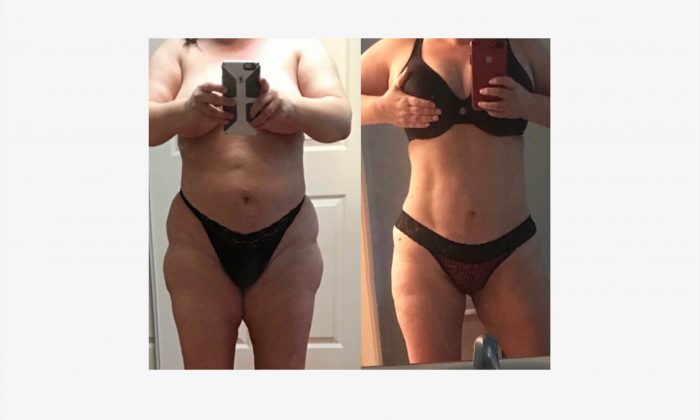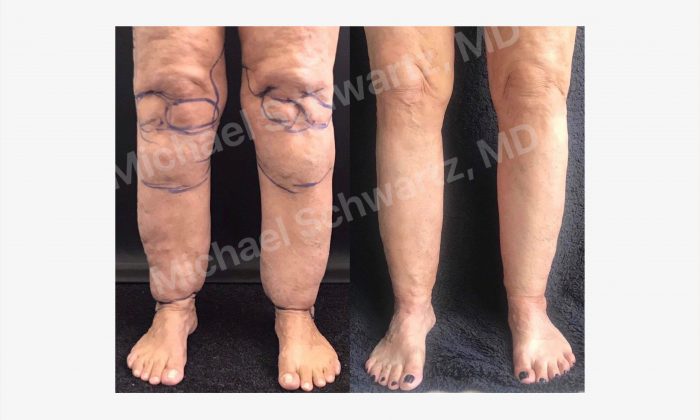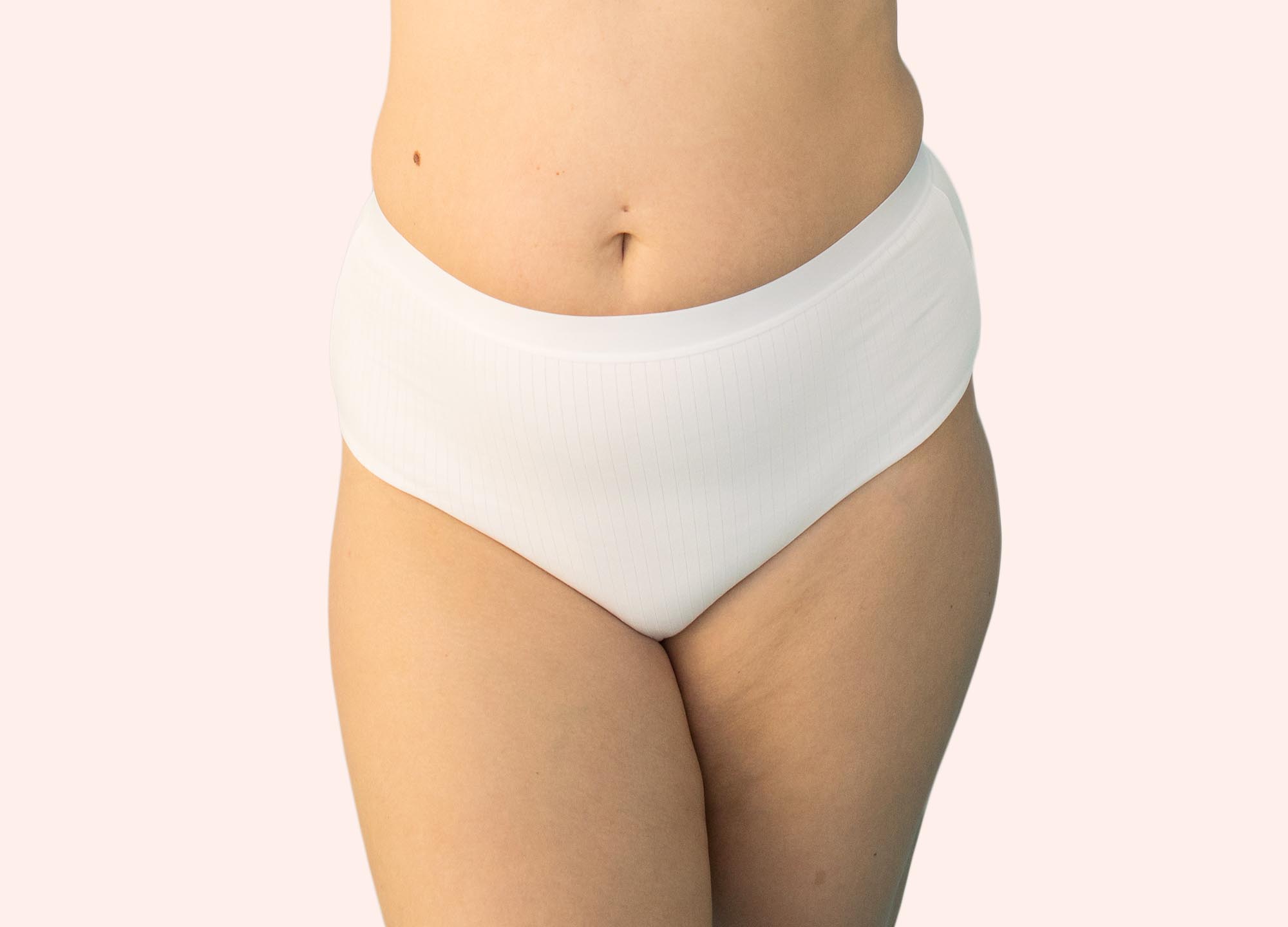Cristina is a 53-year-old woman and licensed aesthetician in Pasadena, California. She was diagnosed with lipedema at 46 but has been living with the condition since she was a teenager. In 2018, she underwent a “completely life-changing” lipedema surgery with the plastic surgeon she now works for. This is her story, as told to Alix Tunell, edited for length and clarity.
According to the Lipedema Foundation, “Lipedema is a chronic medical condition characterized by a symmetric buildup of adipose tissue—fat—in the legs and arms. A common but under-recognized disorder, lipedema may cause pain, swelling, and easy bruising. It may be accompanied by an unusual texture within the fat that can feel like rice, peas, or walnuts beneath the surface of the skin. The intensity of pain may range from none to severe, and its frequency may be constant, come and go, or only occur when the fat is pushed on.”
As a teen, my body looked very different from a lot of other girls’. I was very curvy, with a larger butt, hips, and breasts, and it was attributed to fat when it was really lipedema, since that sets in around puberty. I was in dance and gymnastics, and I had coaches who were very conscious of body shape and the way that we looked. I remember a gymnastics coach telling all of us, “You girls are fat.” We were at the tender age of 12, when our bodies are changing anyway. That was abusive, when I look back at it.
I thought, How can I get rid of this? I’m dancing, I’m doing gymnastics. What else can I do that will make this go away? And that’s how my eating disorder started. I started starving myself and exercising to the point of exhaustion. I had depression from being disproportionately fat in areas such as my saddlebags and inner knees. I became socially reclusive because I was terribly embarrassed. Plus I was in severe daily pain.
My doctors always said things like, “just stretch and exercise,” “go on a diet,” or “fat is not painful.” Other ladies who have lipedema have told me their doctors said similar things. It’s extremely frustrating—we feel disregarded, overlooked, and misdiagnosed.
I got liposuction at 27, and that did absolutely nothing because it wasn’t specific to lipedema.
I hadn’t gotten a diagnosis yet, and I later learned that with lipedema, part of the disease is that the inner knees get really full, so I got liposuction there. It didn’t prevent the progression of lipedema though, because the surgeons have to be specialized in removing all of the fat. If you go to a regular plastic surgeon, they’re there to give you body contouring—not take a lot of fat out, which would leave you with loose skin that’s not aesthetically pleasing. Lipedema surgeons, on the other hand, are doing removal of large volumes of fat, and what ends up happening is, the skin can be left looking like a deflated balloon. That’s the trade-off.
I have three children, and with each pregnancy, my hips, or the saddlebag area, kept getting more and more prominent. I felt as if I were a failure to my children because I was unable to do physical activities with them. My legs felt like cinderblocks; it was hard to pull them around. I couldn’t even take my children to the mall or Disneyland without having to tell my husband to go ahead and meet me back at my resting place because my legs were just too tired and throbbing with pain. I wasn’t big, I was a size 6–8 at the time, and again, I didn’t know that I had lipedema, so I just couldn’t grasp what was wrong with me. I even went so far as to ask my doctor to fill out the form for a handicap placard because walking became extremely difficult. The only exercise that I could do would be in the water, because it doesn’t put any stress on your joints. Overall, the pain was excruciating, and I wish it on no one.
Fast forward to 2016, when I accompanied a girlfriend to her appointment with Dr. Emily Iker, [a physician who specializes in lymphatic disorders]. Dr. Iker looked at me and said, “Oh, you have lipedema too, look at this lovely fat,” then she patted my hips and felt my arms. I was mortified because I didn’t know what type of doctor she was and I had no clue that all the people in the waiting room were also lipedema patients. I was taken aback by the diagnosis, but she said I was a classic case.
I had never understood why I felt these bumps underneath my skin; actually, I thought that it was normal. The texture is from the lipedema nodules. Some of them are round, like little peas. Some of them are oblong in shape, and some of them are larger than others. And that is what causes the rippling of the skin and the feeling of the little bumps. It turns out, the pain is caused from those nodules pressing on the nerve endings.
I had lipedema surgery two years later, in 2018, with Dr. Michael Schwartz [a board-certified facial plastic surgeon in Pasadena, California]. I met him in Bogota, Colombia, where he was taking a course on Vaser liposuction. I was there with another doctor I had worked with, and I sat with Dr. Schwartz every morning at breakfast and just got to know him. I learned that in addition to facial plastics, he is one of few surgeons who specializes in lipedema surgery; he does around 150 per year.
We don’t know what causes lipedema, and this is a disease that we unfortunately cannot control with diet or exercise—the fat is different from regular fat. The only solution at this time is to have liposuction, but the surgeon has to be aggressive at removing large-volume fat. Not all surgeons can do that, because some of them don’t work at a hospital or in a surgery center, so they’re not allowed to take out a large volume. Also, you usually can’t do this awake because it’s too painful, so you need to be under general anesthesia.

Immediately after my procedure, right when I was off the table, the pain was gone. I had postsurgical pain, but that was transient in comparison to how long I’ve lived with this disease. It was completely life-changing. Before my procedure, I tried to reduce as much regular fat as I could, so I could hand the surgeon a canvas, if you will, of mostly just lipedema fat. The cannulae cannot differentiate what is regular fat and what is lipedema fat, so I wanted to better ensure that he was going to be able to take out mostly lipedema fat; that way, it wouldn’t regrow. I can still put on visceral fat, which is around the organs (and I definitely noticed it more this past year, during the pandemic, when I started having margaritas), but I can pinch my abdomen or my legs and not have any of the lipedema fat, nor does it hurt.

I ended up later asking Dr. Schwartz if he was looking for somebody to work in his medical spa, since I had my aesthetician’s license. Turns out, he needed a surgical coordinator, and I thought, Well, who better to do that than me? I have experience and I also have lipedema, so I would be a great resource for patients who are looking for somebody who understands. No one was there to support me or offer any education in preparation for surgery, so I decided that I needed to be that person.
Since then, I have become an advocate for women with lipedema. I have a couple of Facebook pages where I offer support and education for women who are just learning about lipedema; there are more than 14,000 people in these groups. Women with lipedema come in all sizes and shapes. I have seen women who are size 0 and weigh 100 pounds as well as women who weigh almost 500 pounds and have progressed to an advanced stage of lipedema.
We know that lipedema is genetic, and unfortunately, I think both of my daughters have it. One is 22, and the other is 18. My 22-year-old’s body is shaped like mine was when I was her age, and I feel she’s going to have it because she’s a mirror image of me. My 18-year-old is more straight up and down, with thicker ankles, and she’s been telling me that she’s in a lot of pain.
As soon as I feel that she is able to handle the post-op recovery, I will be more than happy to have her get liposuction and not go through what I did with my pregnancies. There needs to be more awareness around this disease so that we don’t have to live in pain.











